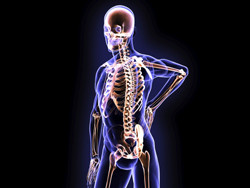Novel solutions for spinal injuries
The human spine provides the framework for upright posture, mobility and overall a healthy musculoskeletal system. However, certain types of cancer metastasise in the spine, and diseases such as osteoporosis present with a high incidence of vertebral fractures. Spinal fractures due to trauma are also a significant source of pain and immobility, and pose a heavy economic burden on health care systems. The scope of the EU-funded SPINEFX(opens in new window) project was to overcome such medical challenges and deliver innovative solutions for treating vertebral fractures. Project activities focused both on cutting-edge research and training research fellows. An important deliverable was the development of a microCT system for investigating trabecular bone samples and vertebral bodies. Using this system, scientists were able to pinpoint differences in vertebral morphology from different pathologies. They observed that osteoporotic and metastatic bones presented different mineral density and structural properties compared to physiological tissue. To further delineate the effect of impact loading on disc degeneration, the consortium developed a novel bioreactor that simulates disc mechanics and performs loading onto vertebral discs. This method helped them identify the anti-inflammatory potential of the molecule EGCG on the intervertebral disc. Exploitable achievements of the SPINEFX network included multi-scale spine models and a fully injectable synthetic ceramic bone substitute. Important information was also obtained regarding the development of improved cements that were tested alongside commercially available materials on 2D and 3D bone models. Overall, the SPINEFX study performed basic and applied research on spinal biomechanics and medical engineering, offering new diagnostic tools and interventions for treating spinal fractures. At the same time, it trained the next generation of researchers in the field who are currently participating in the successor EU project LIFELONGJOINTS.



